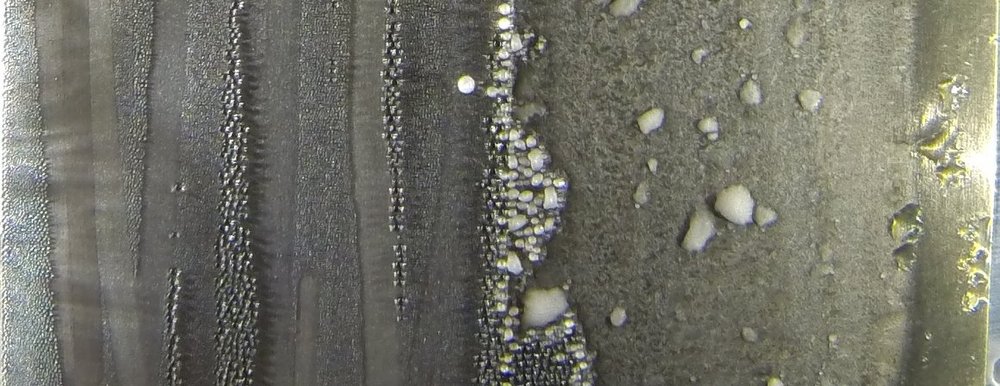Ice-repellent Materials

Ice-repellency or icephobocity is understood as umbrella term for both delayed ice nucleation and low ice adhesion. Current knowledge on icephobic materials presumes that hydrophobic surfaces (with low surface free energy) and superhydrophobic surfaces (which combine a low surface free energy with a rough textured structure) potentially delay freezing and reduce ice adhesion. Therefore, low surface energy materials such as those containing silicon, fluorination and alkyl groups are widely used to modify a surface and the respective polymers are used as components in coatings for achieving low free energy surfaces. In TRI-HP, two different strategies will be applied to increase the success in this development:
Gradient coatings
Contain a reactive perfluoroalkyl or silicone additive that merges with the surface on curing to provide a nanometric-thin hydrophobic surface on an otherwise non hydrophobic coating film. The advantage of gradient coatings is a very high flexibility in choosing the coating matrix.
Intrinsically hydrophobic materials
Materials such as fluoropolymers or silicone based polymers. The intrinsically hydrophobic coatings formed by fluoropolymers provide a higher coating thickness compared to sol-gel coatings. A high coating thickness is expected to enhance durability, but on the other hand to reduce the heat transfer.